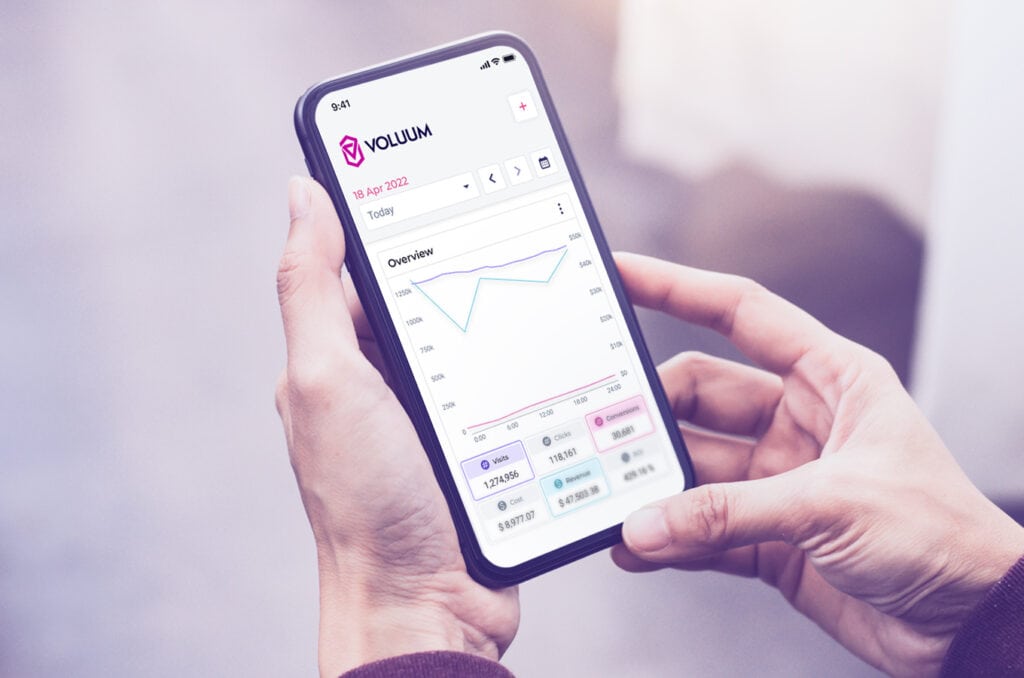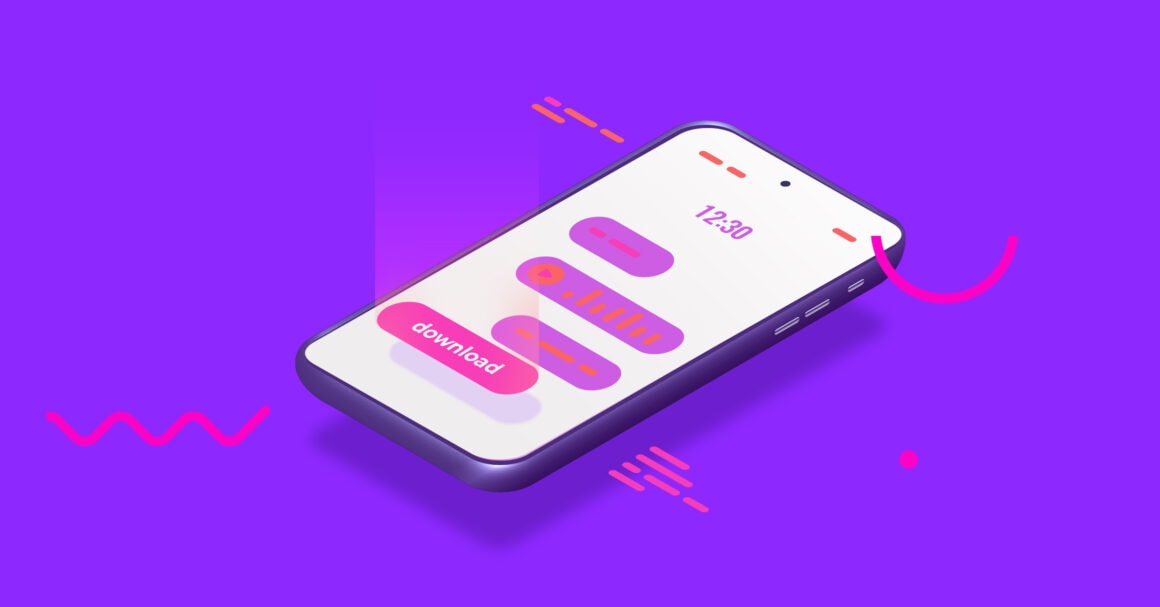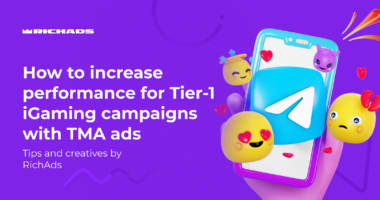So you’ve developed an app, well done! Now the biggest challenge is getting it out there and letting customers know they should be downloading it. Directing traffic to your product is never simple, involves taking several factors into consideration, and most importantly, takes time. What options are out there?
How do I get traffic to my apps?

There are several methods of getting traffic to your product, and several kinds of traffic that you could utilize. They can generally be divided into three categories:
- Organic traffic
- Motivated (incentivized) traffic
- Paid traffic
Organic comes from user searches as they scroll through the results page, read reviews and ratings, and check out other users’ favorites. So, they’re driven to your product as a result of your visibility increasing and as you optimize for your target keywords.
Motivated traffic means that you’re rewarding users for sharing the app with someone, writing a review, and other actions like that. The existing user gets something extra for something as simple as giving a review but that review/rating can help increase your app’s visibility in an app store. Also, once they complete the task and finish downloading the app, they might get extra points or a small discount.
Paid traffic refers to all traffic driven to your app through paid advertisements, promotions or campaigns, traffic source platforms, social media, Google ads, and so on.
As you might be tempted to think;
“Ok, cool. So I just need to figure out which one is best for me and job done!”
I’m rushing to let you know that boxing yourself in with only one kind of traffic channel to drive up your sales can be quite risky. Betting on just organic could mean you’ll be waiting a loooong time before conversion rates start increasing. Relying on paid traffic only, without having any kind of quality content, could lead to dissatisfied users who don’t understand your product.
That’s why it’s always best to combine all approaches to getting traffic while keeping a close look at how they’re performing. So, you’ll also have to find an analytics tool to help you decode the numbers and track all clicks, conversions, visits, and anything actions users take in your app. This way you’ll be able to understand what works for your product and how to direct the traffic flow so it brings the best results.
How do we know this? Because we made Voluum with people like you in mind. Data is king and you’re not gonna go far without tracking your ads, analyzing reports, and adjusting actions accordingly. But before we get into that, let’s chat about where to get that traffic for your mobile app.
Get acquainted with ASO
Organic traffic for mobile apps is almost synonymous with ASO. It stands for App Store Optimization. And it refers to the process of optimizing the page of a mobile app in the app store like Google Play and App Store to improve visibility for the user and maintain a high position in the top charts. It involves keyword optimization for a wide variety of search terms, as well as making your creatives and appearance as visually appealing as possible.
Simply start with research and gather a list of all possible keywords and their combinations associated with the mobile app. Move on to choosing and prioritizing them based on relevance and traffic volume. The assembled pool of keywords is what you’ll need to include in the description and title to popularize the app.
Visuals in the app store matter just as much for ASO optimization; they will help with increasing conversion rates. Whatever creatives you’re gonna use, they need to be understandable and meaningful to the contents of the app. In case of doubt, A/B testing them is always a great option to use in order to see what gets more clicks.
And obviously, follow the rules each app store has set for app listings. Like with Google Play for example, where apps that target children are subject to higher scrutiny. Also, giving only an estimation of price or using “the best” in your icon is also severely frowned upon.
ASO and compliance is probably the most important tool for a mobile app owner to utilize in order to get people to find them and then click download. Especially given that 48% of users find out about new apps by browsing the app store and 38% by checking out the recommendations section – that’s a large audience to explore.
OEM traffic sources
It’s not just another fun acronym to remember but also a great way for mobile app advertising. OEM means Original Equipment Manufacturer and it refers to mobile phone producers who make the devices in their own factories, so brands like Samsung or Xiaomi. They’re a kind of paid traffic sources but work similarly to organic traffic since your app will be advertised within apps or recommended to the user.
OEM traffic sources are platforms that use the traffic within the Android ecosystems. You can advertise products, apps, or services in the pre-installed apps like Weather and Mail, as well as show recommendations to users while they are changing their mobile phone settings or using these apps.
The cool thing about them is that these apps are installed by default and rarely deleted by users. They can also be presented as recommendations by the smartphone manufacturer.
Marketers can advertise on OEM devices either through direct partnerships with manufacturers or through partners like Aura which caters to the OEM demographic, creating rich device experiences that engage and retain customers.
OEMs are quite efficient and offer options for optimization and audience segmentation. Although it won’t be available to you right after you release your app, it’s definitely worth checking out, and using down the line when you gather a larger user base.
Demand Side Platforms for mobile
DSPs are cool tools to buy ads automatically. DSPs get traffic from ad networks that match advertisers’ demands with ad supply from publishers. When using a DSP you won’t have to contact any publishers because the DSP works as an intermediary between advertisers (so you) and placement sellers; “negotiate” the price and frequency of ads based on pre-set parameters determined by the advertiser.
There are several platforms worth looking into like Liftoff, Moloco, or Smadex. But the one you ultimately go for depends on your detailed needs as they might have different profiles, prices, and options. Either way, an interesting paid option to consider.
Social media is a great way to promote pretty much anything, so there’s definitely space for your mobile app out there. And you’ve got plenty of options. Facebook, Instagram, TikTok, Youtube – go for one or go for all of them depending on the profile of your product.
While organic social media marketing is nice to have, you can use paid ads on those platforms for much faster, more measurable results. Get acquainted with Instagram for Business or TikTok, and trust me – it only seems complicated. They offer all sorts of ad formats, so you’ll be able to find the one that fits your audience best. On TikTok, you can choose from ads like In-Feed, Top View (the only difference is that Top View appears in the feed for 60 seconds), or some fun formats like Branded Hashtag or Brand Takeover which encourage users to use branded effects and create their own content with them. Instagram ads are quite versatile too, you can go for ads in Stories, make Reels, use Carousel format (it’s great for some more educational content), or place your ad in the “Explore” section (which is curated for each user based on their searches)
You could also strike up cooperation with influencers who could advertise your app to their audience, make a video review of it, or give out discount codes. The sky is the limit. But with 4.75B people using social media around the world, the chances you’ll find someone interested are quite high and it’s too big of an audience to miss out on.
Video ads work great on social media and they can be advertised on most platforms. Luckily it doesn’t always require hiring a whole team of experts who will direct a long ad for you, they’re pretty easy to figure out and can be produced in-house. For example, you can run ads on TikTok which has been blowing up in the past few years. The quirky, funny content is appealing to all sorts of users, and slipping into someone’s feed with a short ad is easier than you’d expect.
Always measure your traffic…always

While you worry about driving traffic to your product, you should actually worry about your ad’s performance. Whether you rely on ASO or you buy your ads programmatically won’t matter unless they perform.
Successful campaigns require a strategy that can only be built by gathering and analyzing data.
So, let me tell you why you should take a closer look at Voluum.
And no, it’s not because you are reading our blog 🙂
Voluum is an industry-leading tracker for a few reasons.
It’s not just built to assemble your reports, but also to help you optimize your campaigns and get the best possible results. Voluum gathers tangible information about clicks, conversions, impressions, etc. in real-time, so you get to act as soon as something in the performance changes or simply stops being up to standard.
There are also plenty of features designed specifically for making your life easier, so there’s no excuse to stay away from tools like Voluum. Which features?
- A/B testing that you can use to test which combination of creatives or landing pages works the best for your product.
- Rule-based paths that direct traffic to the best-performing offers.
- API traffic source integrations with all major platforms so you can keep track of everything from a single dashboard.
That is just the tip of our feature mountain. Also, everything we do has your security and the end user’s security in mind. We only collect data necessary to your ads performance with full compliance with GDPR requirements. And thanks to our almost ten years of experience, you can rely on our systems to be up and running, so you’ll never be left without access to your most crucial stats.
But will it track in-app events?
No, but yes. Voluum on its own won’t be able to track in-app events but with the right partner, everything is possible. Mobile Measurement Partners like Appsflyer keep track of all client-generated events related to your app. And connecting Appslfyer with Voluum will enable you to use all of Voluum’s tracking and optimizing powers for your app’s growth.
It’s quite simple in setup.
- Set Voluum as a partner in Appsflyer.
- Add your app in Voluum as an offer.
- And your in-app events will be tracked in Voluum as conversions.
- Set custom conversions to distinguish between different conversion types.
You might feel like this just adds more unnecessary steps. But passing data that was generated by Appsflyer to Voluum gives you access to more detailed analysis and reporting options. Use them to maximize your profits. It works – as proven by this case study.



